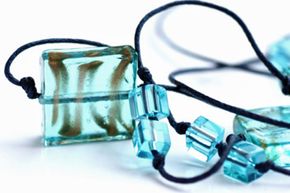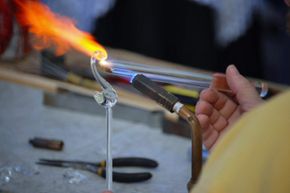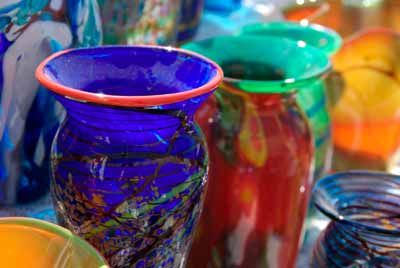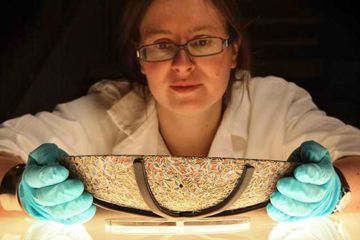Say the word lampworking, and you're likely to get some blank stares from most people outside of the glass-art community. But the work made from the technique? Everyone's familiar with that: Think of the glass beads that dangle from necklaces, the delicate glass flowers you can see at Harvard's Botanical museum and glass paperweights with intricate designs imbedded inside them. Don't let the size of these examples fool you, though -- lampworking can be used to make large pieces such as sculptures too.
Like its more familiar cousin, glass blowing, lampworking uses a flame to heat glass and make it molten or pliable. But the two techniques are very different--and create very different end products. True, they both use heat to get glass to be bendable and shapeable. But that's about where the similarities end. Glassblowers use hollow tubes to blow air into the hot glass and expand it. Therefore, the finished products usually have air in the middle -- think of a hollow glass ornament you might hang on a Christmas tree. Lampworkers, in contrast, don't blow air into the glass, so the beads and other products they create are solid. Instead, they work the hot glass around a steel rod, letting it solidify around it.
Advertisement
This type of glasswork also goes by the name flameworking and torchworking, though lampworking seems to be the most popular term. This latter name comes from the fact that the work was once done by the flame of oil lamps. But that's not to say the art doesn't stretch back even further than that. Read on to learn why the foundations of flameworking may go all the way back to the ancient Egyptians.




